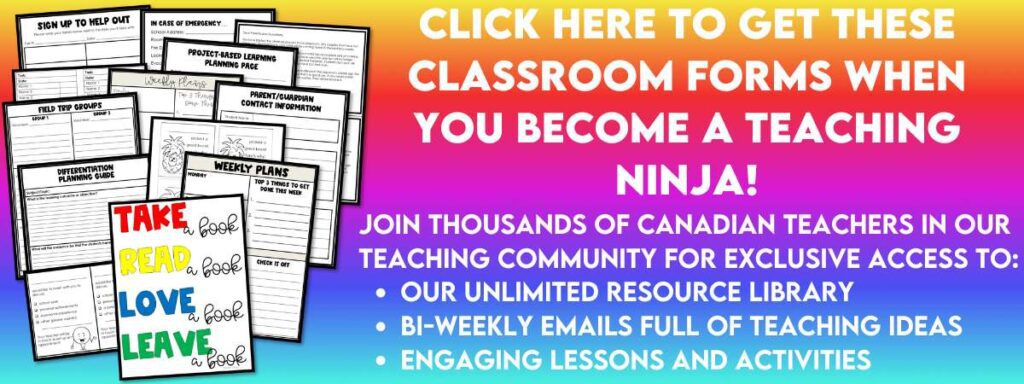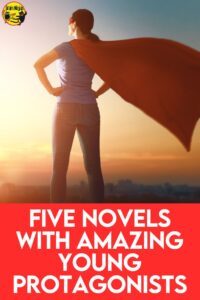
Read-aloud novels are a huge part of our daily literacy routine. We built in fifteen minutes each day where one of us reads from a novel to our students. It is important (even at the higher grades) to model fluency, self-monitoring, and questioning techniques when reading aloud to students. We include these minutes in our weekly Language Arts minutes.
Why Should You Always Have a Novel Ready?
We try to always have at least one novel on the go. It is ready to use after transitions like recess or lunch to calm students. We read to fill those minutes before we head to the gym or music or are waiting for a bell. When you have the right novel, you can use up all those lost minutes as part of our Language Arts programming.
You can always take a novel on a field trip. It comes in handy if the bus is late or you need a quiet activity while things are getting set up.
How Do We Choose the Novels We Read?
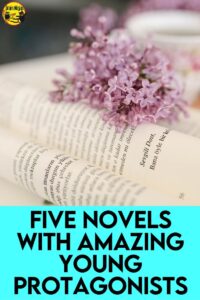
Each year we select a theme for choosing our read-aloud novels. In the past, we’ve chosen novels around different character traits, locations, or genres. This year’s theme was protagonists that face their fears. Our goal was to show students that, like real people, characters are not perfect and can be challenged to become stronger.
Books with strong protagonists are great for showing students that the hero of the story doesn’t have to be perfect. In fact, it makes for a much more interesting read if the character isn’t perfect. This helps students create more interesting characters in their own narrative writing.
These novels were chosen for our fourth and fifth combined class (9 to 11-year-olds), but are often at a higher reading level than if they were to read the book independently. We regularly ask students to recommend books for us to read to the class.
This set of book recommendations sticky notes comes in handy. They can be found in our Resource Library, along with many other general classroom forms to help you organize your classroom, or we can send them directly to your inbox when you become a teaching ninja.
The Girl Who Owned a City By O.T. Nelson
Honestly, we have not read this book to any class since the 2020 pandemic. We have been worried that it could be triggering for students. This book is a dystopian story and does have some strong language and a shooting, so it will be important to preread it and decide if your students can handle it.
A sickness has killed all adults over the age of 12. Lisa Nelson takes matters into her own hands by leading a group of children to survival. Her take-charge attitude annoys many people, but most of all, Tom and the Chidester Gang.
You may have a little trouble finding the book in print, but I was able to order it through a local bookstore.
Among the Hidden By Margaret Peterson Haddix
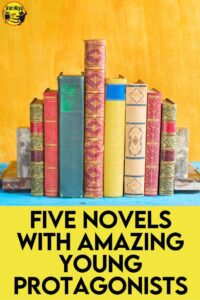
Luke is a third child, born to a family during a food crisis and population control law. He has to stay hidden in his house day after day. After a new housing development is set up behind his home, he sees the face of a child in one of the windows. His curiosity gets the best of him, and he leaves the safety of his home to investigate.
This book is the first of a dystopian series, which is great for leading students into more reading as they follow Luke on his adventures. Recommended for your stronger readers. You can easily link this book to global issues like China’s “one child policy.” This is the first book in the series which is always great for inspiring your students to read the rest. Even though this one has been out for a long time, it continues to be a hit with our students.
Hatchet By Gary Paulson
Brian is off to visit his father in Northern Ontario when the small plane crashes, killing the pilot and leaving him to fend for himself in the Canadian wilderness.
This book is a challenge for some students because the beginning is a little slow, but it picks up once the plane has crashed. It has sequels which, for some students, were even better than the original. It is a higher reading level, so it is recommended for only your strongest readers.
This is the first book in a short series. Many students end up searching for and reading the rest of it.
Wonder By R.J. Palacco
Auggie is about to attend school for the first time after being homeschooled for his first four years of schooling. He has lived with a facial deformity and needs to learn to face kids at his new school. It is a journey through friendships told through the perspective of several people in Auggie’s life.
This book deals with lots of issues around bullying and acceptance and will make you cry (especially if you love dogs), but it is also very uplifting and rewarding.
Now that there is a movie adaptation of the book, you can easily watch the movie and compare it to the book.
Fish in a Tree By Linda Mullaly Hunt

Ally can’t read, and more importantly, she doesn’t want to get help. Things change when a new teacher does things a little differently, and she realizes reading might be possible.
This book deals with understanding dyslexia, and many of our students could relate to several of the characters in the story. It is a great book for understanding learning differences. This one was so popular with our students, and there was a jaw-dropping moment where everything you thought was true wasn’t. It continues to be a favourite in our classroom, especially after spring break when the grade five students are ready to be in grade six.
Novels are Great for Book Clubs
We read novels to our students all year long, but we also use them in our teaching. One project that works well with any novel is our Twisted Literature Circles activity. Find it in our TpT Store ($USD) or our BN Shop ($CAN). Learn more in our post How to Teach Reading With Book Clubs.
Bonus Titles (because there are SO many you could use)
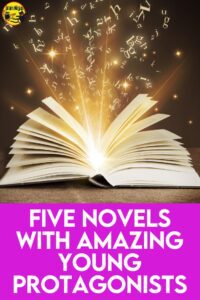
The Nest by Kenneth Oppel
Harry Potter and the Philosopher’s Stone by J.K. Rowling
City of Ember by Jeanne DuPrau
Holes by Louis Sachar
The Apothecary by Maile Meloy
The Girl Who Drank the Moon by Kelly Barnhill
Restart by Gordon Korman
Hunger Games by Suzanne Collins
There are so many books that fit into this theme, which is why it’s a great theme every year after year. What other books do you know about? Do you read to your students? Let us know in the comments below.

